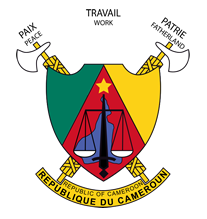Cameroon: Government
Key Figures
- Chief of State:
- President Paul Biya
- Head of Government:
- Prime Minister Joseph Ngute
Overview
- Government Name:
- Republic of Cameroon
- Constitution:
- Adopted: 1972; The basis of the constitution is to have a strong central government that is dominated by the executive branch. The constitution includes the rights of citizens, structure and function of government, symbols and institutions of the country and how the constitution should be amended.
- Government Type:
- Republic

Index of Economic Freedom
Country Risk Rating
Government Branches
| Main Powers | Election Process | Election Cycle 1 | |
|---|---|---|---|
| Executive | The president has the most power of the three branches and is in charge of naming cabinet members, judges, and governors. The president also approves or vetoes regulations, among other things. |
The president is elected by plurality vote. The prime minister is appointed by the president. |
7 years |
| Judicial | The judiciary is subordinate to the executive branch's ministry of justice. The supreme court may review the constitutionality of a law only at the president's request. |
The supreme court judges are appointed by the president with the advice of the higher judicial council of Cameroon. |
No term limit |
| Legislative | The legislative branch is responsible for creating and passing laws. |
The senate comprises 100 members, with 70 members being indirectly elected by regional governing councils and 30 members being appointed by the president. The national assembly has 180 members, 49 of whom are elected by single and multi-seat constituencies by simple majority vote. |
5 years |
Regional Trade Blocs
International Organization Participation [2]
Environmental Agreements [3]
Tax Information [2]
- Tax Authority:
- Information not available
- Tax Name:
- Information not available
Sources:
- ElectionGuide http://www.electionguide.org/
- EY, http://www.ey.com
- CIA World Factbook, https://www.cia.gov/the-world-factbook/
- U.S. Bilateral Relations Fact Sheets http://www.state.gov/r/pa/ei/bgn/


